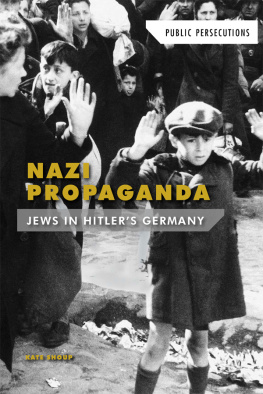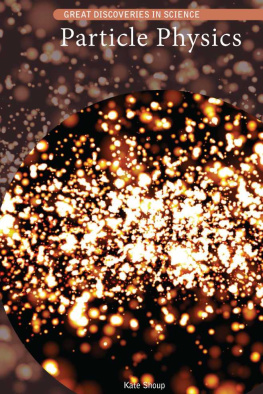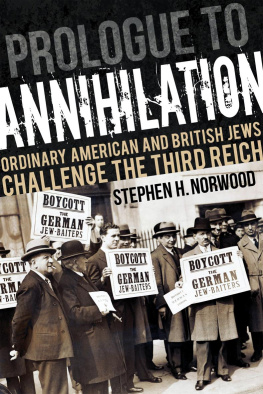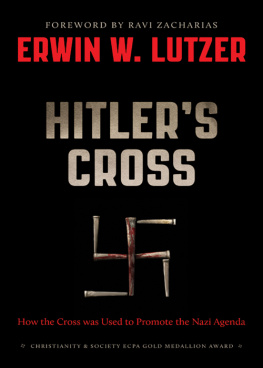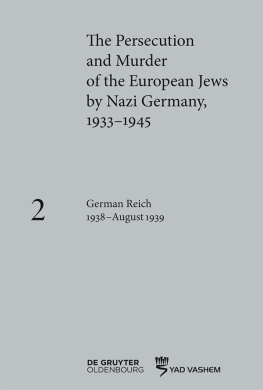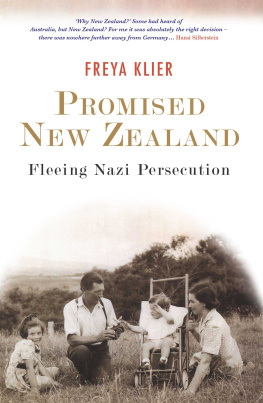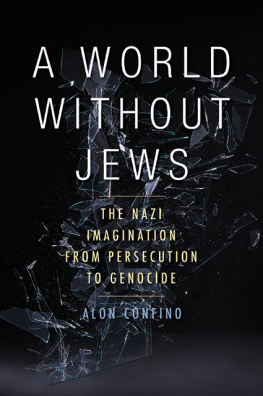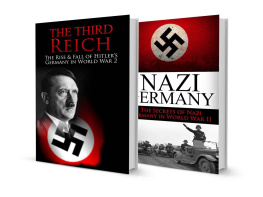Published in 2017 by Cavendish Square Publishing, LLC
243 5th Avenue, Suite 136, New York, NY 10016
Copyright 2017 by Cavendish Square Publishing, LLC
First Edition
No part of this publication may be reproduced, stored in a retrieval system, or transmitted in any form or by any meanselectronic, mechanical, photocopying, recording, or otherwisewithout the prior permission of the copyright owner. Request for permission should be addressed to Permissions, Cavendish Square Publishing, 243 5th Avenue, Suite 136, New York, NY 10016. Tel (877) 980-4450; fax (877) 980-4454.
Website: cavendishsq.com
This publication represents the opinions and views of the author based on his or her personal experience, knowledge, and research. The information in this book serves as a general guide only. The author and publisher have used their best efforts in preparing this book and disclaim liability rising directly or indirectly from the use and application of this book.
CPSIA Compliance Information: Batch #CW17CSQ
All websites were available and accurate when this book was sent to press.
Library of Congress Cataloging-in-Publication Data
Names: Shoup, Kate.
Title: Nazi propaganda: Jews in Hitlers Germany / Kate Shoup.
Description: New York : Cavendish Square, 2017. |
Series: Public persecutions | Includes index.
Identifiers: ISBN 9781502623218 (library bound) | ISBN 9781502623225 (ebook)
Subjects: LCSH: Holocaust, Jewish (1939-1945)--Juvenile literature. | Jews--Persecutions--Germany--Juvenile literature. | World War, 1939-1945--Jews--Juvenile literature. | Germany--History--1933-1945-Juvenile--literature. | Germany--Ethnic relations--Juvenile literature.
Classification: LCC D804.34 S47 2017 | DD 940.53 18 --dc23
Editorial Director: David McNamara
Editor: Fletcher Doyle
Copy Editor: Nathan Heidelberger
Associate Art Director: Amy Greenan
Designer: Stephanie Flecha
Production Coordinator: Karol Szymczuk
The photographs in this book are used by permission and through the courtesy of: Cover, 12, 75 Universal History Archive/Universal Images Group/Getty Images; pp. 4, 56, 78, 104 Bettmann/ Getty Images; p. 7 New York Times Co./Archive Photos/Getty Images; p. 8 Three Lions/Hulton Archive/Getty Images; p. 15 Everett Historical/Shutterstock.com; p. 22 Johannes Simon/Getty Images; p. 25 File:Riksdagsbrannen. jpg/Wikimedia Commons; pp. 28, 50, 62, 63, 94 ullstein bild/Getty Images; p. 30 Print Collector/Hulton Archive/Getty Images; pp. 35, 38, 65 Universal Images Group/Getty Images; pp. 45, 110 AP Images; p. 47 Imagno/Hulton Archive/Getty Images; pp. 76, 86, 90 Sovfoto/Universal Images Group/Getty Images; p. 82 AFP/Getty Images; p. 96 Central Press/Hulton Archive/Getty Images; p. 101 Horace Abrahams/Hulton Archive/Getty Images; p. 108 NASRA/File:Nuremberg trials 281431M original.jpg/Wikimedia Commons.
Printed in the United States of America
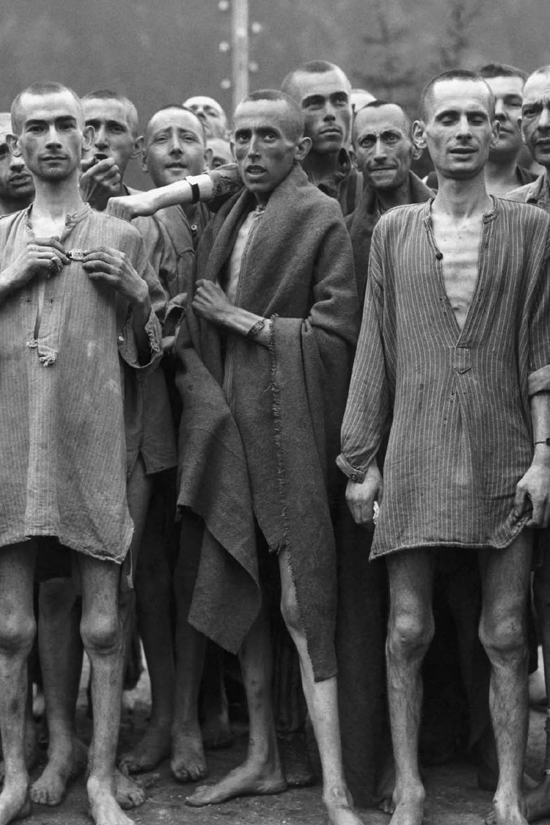
Surviving prisoners who were used as slave labor at the Ebensee concentration camp, in Austria, were liberated on May 9, 1945.
INTRODUCTION
Time of Destruction
B etween 1939 and 1945, the German government, led by Adolf Hitler and the Nazi Party, methodically slaughtered some 6 million European Jewsabout two-thirds of all Jews in Europe. Of these, 1.5 million were children. Today, we call this murderous campaign the Holocaust . The Holocaust is also known as the Shoah, which is Hebrew for destruction.
The Holocaust coincided with World War II. This war pitted the Axis Powers (Germany, Italy, and Japan) against the Allied Powers (Great Britain, France, the Soviet Union, the United States, and China). It started in 1939, with the German invasion of Poland. In 1940 and 1941, Germany conquered Denmark, Norway, Belgium, the Netherlands, Luxembourg, France, Yugoslavia, and Greece. With each victory, the Nazis gained territoryand with it, access to yet more Jews. Allied forces finally defeated the Nazis in May 1945.
The Holocaust was an act of genocide . According to the United Nations Convention on the Prevention and Punishment of the Crime of Genocide, genocide describes any of the following acts committed with intent to destroy, in whole or in part, a national, ethnical, racial, or religious group. The acts in question include killing members of the group, causing serious bodily or mental harm to members of the group, deliberately inflicting on the group conditions of life calculated to bring about its physical destruction in whole or in part, imposing measures intended to prevent births within the group, and forcibly transferring children of the group to another group.
How did the Nazis murder so many Jews? They developed quick and efficient killing methods that enabled them to slaughter Jews in an assembly-line manner. In some killing facilities, Nazis massacred as many as eight thousand Jews each day. Why did ordinary German citizens (and later, citizens of the territories that Germany conquered) allow these killings to happen? This question is more difficult to answer. One reason is that the Nazis engaged in a systematic effort to dehumanize the Jews. To achieve this, they blamed the Jews for Germanys defeat in World War I and for its dismal situation in the aftermath, they passed anti-Jewish laws, and they spread anti-Jewish propaganda . As a result, many ordinary citizens simply did not view Jews as human beings. Another reason is that many ordinary citizens benefited from the absence of the Jews. These citizens took their jobs and acquired their property. A third reason is that the Nazis severely punished anyone who attempted to help the Jews. This instilled fear in the general public. Finally, the Nazis conducted much of this killing in secret. Few people knew the extent of the Nazi death machine.
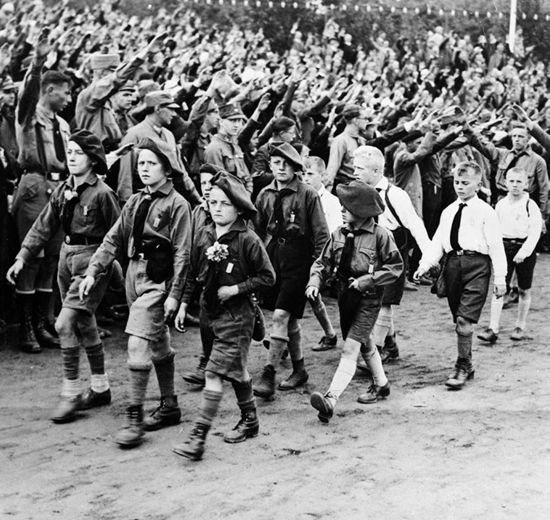
Children were indoctrinated early by the Nazis. Here, a group from the Hitler Youth marches in front of saluting adults.
The Nazis sought to exterminate all Jewsan act they called the Final Solutionand they very nearly succeeded. Despite their efforts, thousands of Jews survived Nazi oppression to bear witness to the crimes committed against them. It is imperative that all people learn from their experience to ensure such crimes never occur again.
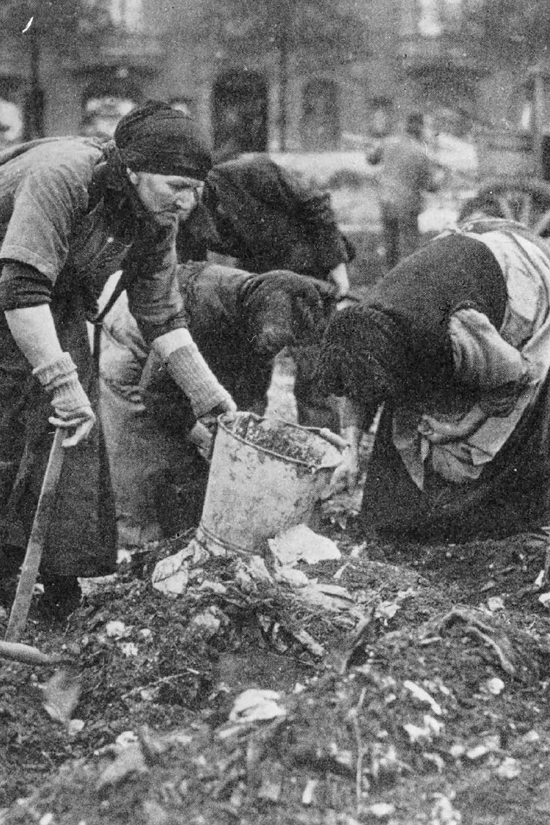
Following Germanys defeat in World War I, ordinary Germans fell into extreme poverty. Here, German women sift through garbage looking for food.
ONE
The Seeds of the Holocaust
W hen confronted with the topic of the Holocaust, people inevitably ask one question: Why? Why did the Germans hate the Jews? Why did they seek to annihilate them? There are, of course, no easy answers to these questions. After all, how could anyone explain such insanity? Still, the attempted extermination of the Jews didnt just happen. Certain events and attitudes contributed to their demise.
The seeds of the Holocaust were planted in the aftermath of World War I, then known as the Great War. This conflict commenced during the summer of 1914.

